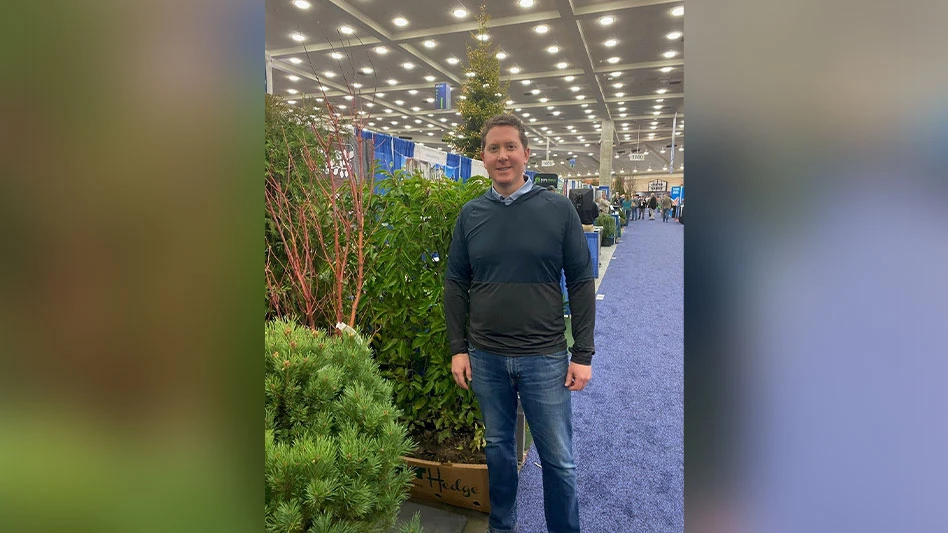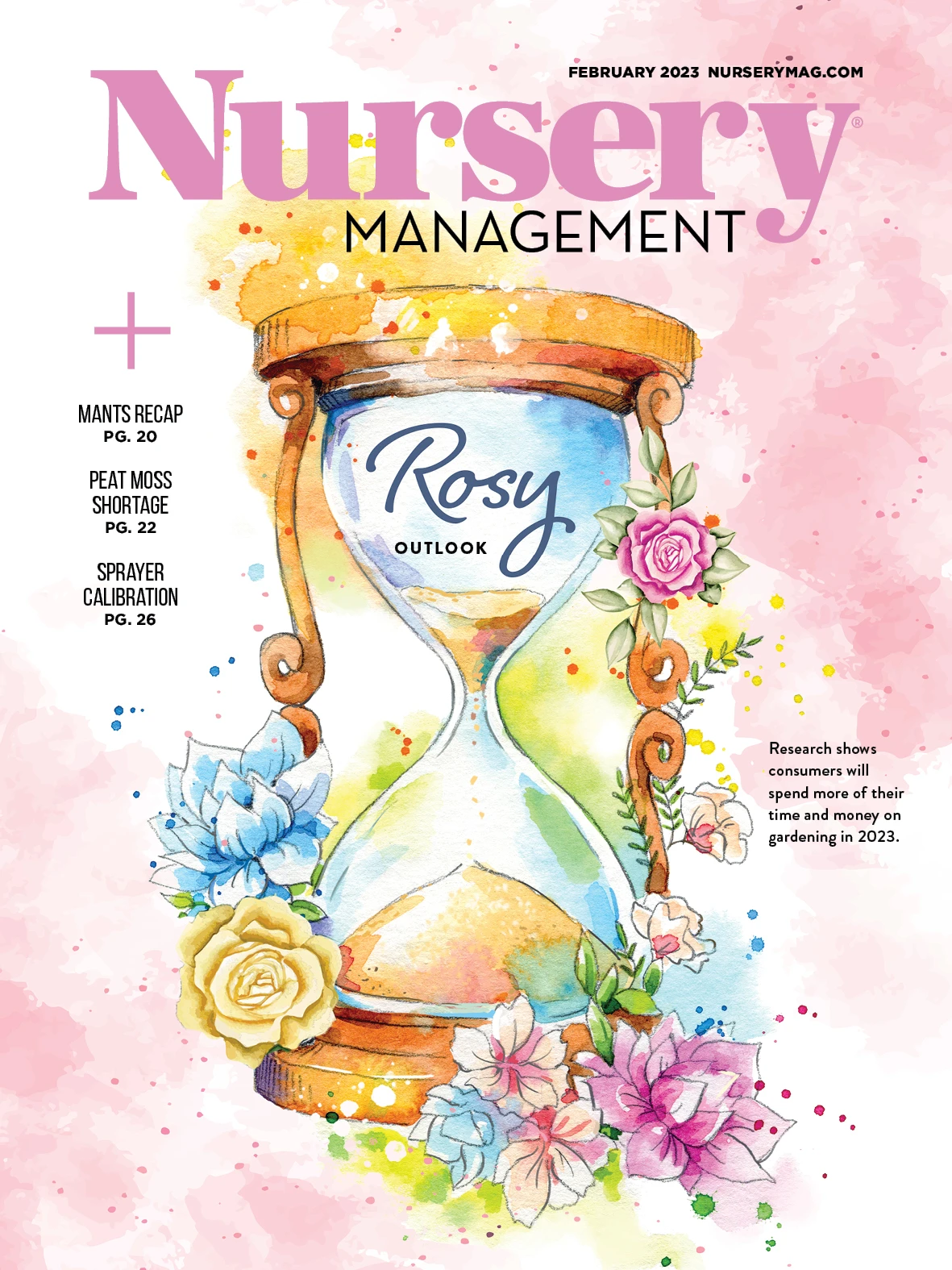
NM: How did you get started in the horticulture industry?
BM: I've been vegetable gardening with my mother since I was four years old, so we'd plant seeds mostly like tomatoes, basil, peppers, some gourds, but just pretty common stuff. We had a raised bed on the side of our house, and it just instilled this gardening enjoyment, the thrill of going out to harvest, the thrill of watching a seed as it emerges and just everything related to that. I loved being outdoors. I loved working in the soil. My father was getting into the idea of having a four-season garden, and he bought some books about dwarf conifers. Then he got into Japanese maples. Working on the four-season garden was something that we would do together.

NM: When and how did your passion for landscape design begin?
BM: My parents lived about a mile from the Chicago Botanic Gardens, and so that was a tremendous resource growing up. We'd walk through the Japanese garden and the dwarf conifer garden on the weekends. Then I did a short internship there when I was 16. I learned about candle pruning pines, creating tiers and sculptural pines. I started with landscape design around my junior year of high school. I was doing three to six projects a year, not really formally drafting them, but creating project boards for plant layouts. Fast forward to when I’m ready to apply to colleges, and I looked at a number of schools for liberal arts education. All of a sudden, I came across Cornell and realized that there was a completely separate application to go into the College of Ag and Life Sciences for landscape architecture. The more I read about it, the more it seemed like it was a phenomenal fit. I didn't want to go off and abandon my interest in gardening. I wanted to further it, so I hopped into Cornell in 2000, and I ended up spending the next eight and a half years there. Once I graduated, I wasn't really ready to leave. I wanted to study more. I didn’t want to go work for a landscape architecture firm, but I also wasn’t ready to go off on my own full time. I was kind of in this weird imbalance which pushed me to start a masters in horticulture there.
NM: Why did you create InstantHedge?
BM: So with my masters in horticulture at the time, I was really interested in looking at plant low temperature tolerance. I had this idea that I was going to use my degree in landscape architecture combined with my knowledge about plants, and I was going to be one of the world’s experts in selecting plants for extreme environments, like rooftop garden, balconies, terraces and cold climates like Chicago where I grew up. I studied the dynamics of low temperatures and how they move through different types of soil. That was fun, and once I finished that research, I decided to look at how plant stress impacts root freezing tolerance, so I got into a lot more ‘brainy’ research pursuing my PhD in horticulture.
After a few years of that, I don’t want to say I got bored with it, but I was ready (laughs). At this point, I ‘d been with Cornell for eight years. I was there during the school year, and in the summers, I was designing gardens in the greater Chicago area, some roof decks in the city, but mostly suburban landscapes with the focus on a four-season garden approach. I was still utilizing and experimenting with hundreds of different Japanese maple and dwarf conifer gardens. I was kind of using my customers' gardens as test grounds for whether it was a new Japanese maple cultivar or a cool new conifer that I hadn't seen planted elsewhere, and in the process of doing one of the landscapes, I flew out to Oregon, I was purchasing and hand selecting a lot of different plants for a garden. One of the nurseries I was buying stuff from mentioned that they we’re going out of business and losing the land lease in a year. and I inquired, ‘what’s going to happen with all your product?’ They said, ‘honestly, we don't know.’ A week later I dove in headfirst, and I made an offer on purchasing the remaining inventory and hired the proprietor as my nursery manager. That was 2007. I was still at Cornell, but also supporting an operation out in Oregan as well. For the first few years. I was just building up numbers and building up stock plants, trying to buy cool new varieties from all over. I had permission to take cuttings from lots of incredible collections, so I was sending cuttings to graft to Oregon throughout the winter from awesome gardens on the East coast from collectors that I've been friends with for ten plus years, including gardens at Cornell and other amazing private gardens.
From 2007 – 2010, I built up this amazing stock of cool new varieties, but that was the same time of the housing crisis, and nurseries were just imploding left and right. Some of the biggest nurseries in Oregon were going out of business, and at the same time I was trying to launch a new operation. So, it was very difficult to gain a new customer. I had plant material, but I didn’t have many buyers for it. Slowly, I gained a tiny bit of market share, but while I’m trying to sell plant material from Rare Tree Nursery, the trucks were being filled with green giants or emerald greens. Then they’d say, ‘Oh, we’ve got three feet at the tail for your plant material, Brent.’ So, while I’m watching thousands of hedge plants of all this more common bread and butter varieties shipped to Oregon, they’d say, ‘oh, we’ll take five twombly's red sentinel, five mikawa yatsubusa Japanese maples, and a few of those cool conifers just some color to spice up the garden center.’ … It was a little depressing (laughs). The volumes were down, and more than five feet on a truck were so few and far between. I asked myself what am I doing wrong? I wasn’t doing anything wrong, and the reality was that a lot of these cool new varieties were not used in the quantities that the basics are used.
I continued on the path of improving our quality and availability, making no money whatsoever, just constantly reinvesting, trying to keep the business viable. Then I took a trip to Europe in 2012. I toured mostly to see their conifer production and what varieties were popular in the Netherlands. The Netherlands is the nursery central for all of Europe. Technologically they are so far ahead of what we’re doing in the U.S. with equipment, labor efficiency, everything. It was a mind-blowing trip, but besides what I learned from conifer and maple production, I stopped into a nursery called QuickHedge. They were basically maintaining 35 miles of hedge with seven employees. It was the polar opposite of how my operations were run. Rare Tree Nursery even to this day, most plants are touched 5, 6, 7, 8 times before they end up being shipped or go onto a truck to an end user. … Here, they had over a half million plants in production as finished hedges with so few employees because they were just utilizing equipment to the max – GPS control tractors, custom implements. They were performing these tasks to create gorgeous, finished hedges. It really pivoted my entire thought process. I didn’t have the land with Rare Tree to just dive in and start creating finished hedges. I needed a much bigger plot, a tremendous number of seedlings and rooted cuttings, so it wasn't something that I could just pivot into within weeks. After thinking about the business model for a few months, I decided ‘you know what, I'm young enough. I'm just going to dive in headfirst and try this out.’
At the end of 2012, I pivoted some of my production to produce my own liners for eventually finding a property and launching a finished hedge company. It took about 18 months, but after 18 months, I had around 45,000 plants that were ready to go into the ground, found a beautiful piece of property and a friendly investor. That was the birth of InstantHedge. Our first crops went in the ground in the summer of 2014. Our first sales for one or two varieties started in 2019, but really 2020 was our launch year, which coinciding with COVID and the canceling of a lot of tradeshows made that a little difficult, but Since launch, we're shipping a lot of hedges. We had over 3,000 linear feet shipped to an estate in New York to create an insane hedge maze. We supplied over 2,000 Linear feet of boxwood hedges to an amusement park in New England. We've also shipped a tremendous number of smaller orders that are going to residents, hotels and balconies throughout the U.S., so the diversity of projects that we've been able to supply to over the last three years is pretty incredible.
NM: What is your favorite part of your job?
BM: Most of the time I live 3,000 miles away from my nursery. I’m based on the East coast, I’ve been remote since day one, so I'm coming on 15 years of remotely owning and operating my Oregon nurseries, now three nurseries in Oregon. One of the coolest things is being able to share them with my kids who aren't around them as often as I'd like. I have three young boys, eight, four and two. We obviously work a lot in our own garden, and they know me as the tree guy and the hedge guy (laughs). I'm excited this coming summer to take them to the amusement park where I supplied 3,000 linear feet of boxwood, and we can walk the amusement park and I'll say, ‘Hey Daddy, grew all these,’ so just being able to kind of instill that passion in my kids and have that grow organically is something I enjoy.
NM: What do you do for fun when you’re not working?
BM: I love to travel. I love to cook. I’m an avid griller, and I collect a lot of bourbon (laughs). It’s amazing how many other nursery owners I've spoken to that also happened to be bourbon enthusiasts or collectors. I've been collecting bourbon for the last eight years. My niche with bourbon collecting is stuff all the way back to about 1910, so pre-prohibition, prohibition era and a lot of the cool stuff from the 50s, 60 and 70s.
NM: Do you have a favorite that you would like to share?
BM: For something that’s accessible to most people, I’d recommend Old Forester 1920.
For more: www.instanthedge.com
Get curated news on YOUR industry.
Enter your email to receive our newsletters.
Explore the February 2023 Issue
Check out more from this issue and find your next story to read.
Latest from Nursery Management
- [WATCH] Winter is coming...but spring will bring disease
- Sam Hoadley talks about Mt. Cuba Center's latest evaluation of Solidago sp. for the Mid-Atlantic region
- Prices & Market Segments
- Countdown to shutdown
- All in the family
- From growing plants to growing people
- Weed Control Report
- Advocacy in action






